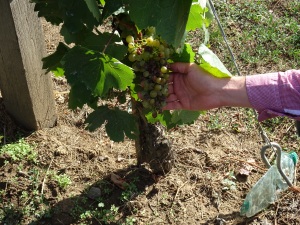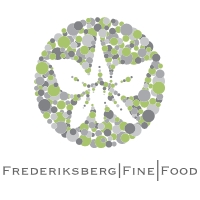Tokay - Ungarn
Tokaj området består af 28 landsbyer, der må anvendes betegnelsen Tokaji på deres vine. Vinene dyrkes mellem de to floder Tisza og Bodrog i ly af Karpaterbjergene.
I slutningen af det 17. århundrede blev Tokaj vinene anset for at være nogen af de største vine i verden. Kongelige dekreter blev udstedt for at sikre kvaliteten af vinene og verdens første kendte klassifikationssystem blev udviklet i Tokaj i midten af det 17. århundrede. I det 18. og 19. århundrede nåede Tokaj området sit højdepunkt indtil nu. De royale hoffer i hele Europa og Rusland købte og drak Tokaj. Den franske Louis XIV kaldte de søde vine fra Tokaj for kongernes vin - vinenes konge.
winetravelaroundtheworld.com
To understand the wines of Tokaj (Tokaj is the region, and Tokaji is the wine produced in the region – both pronounced “Toe kye”), you have to understand the history of Hungary. By the end of the 17th century Tokaji was considered one of the world’s greatest wines. Royal decrees were issued to safeguard quality, and the first ever known system of classified growths was devised in Tokaj in the mid-17th century. The 18th and 19th centuries saw the wines from Tokaj reach their greatest height. Imperial courts throughout Europe and Russia purchased and drank Tokaji. King Louis XIV called the sweet wines of Tokaj – vinum regum, rex vinorum – wine of kings, king of wines.
Yet, after such a glorious past, the region was decimated by two World Wars and the advent of communism. Under communism, winemaking was centralized into a single state-owned holding, and quantity, not quality, became the objective. When communism fell in 1989, the winemakers of Tokaj had to build their vineyards and their winemaking from scratch. As several people told us, when you lose 40-50 years of history, you don’t just lose years, you lose the link to your past and the knowledge that is passed from generation to generation.
The year 1989 saw the beginning of a vigorous renaissance in the Tokaj. With the influx of substantial money from foreign investors, the replanting of vineyards and the building of new facilities started. Tokaj began its path back to its past glory. We visited three pincészets in Tokaj, and each one is helping shape the future of this region.
But, before I describe our visits, a short introduction to the wines of Tokaj might be helpful. Sweet Tokaji wines are typically a blend of Furmint, Hárslevelű and Sárga Muskotály grapes. A base dry white wine is first made (usually with Furmint grapes), then this base wine is mixed with Aszú berries (botrytised, shriveled grapes that are picked berry by berry). During harvest, it can take up to 30 passes in the vineyards to pick the botrytised gapes at the optimal time. These botrytised grapes were originally picked and placed into 20 liter wooden tubs called puttony. Traditionally, the concentration (sweetness) of the Tokaji wines was defined by the number of puttony added to the base. Today, the “puttonoys” is based on the amount of the residual sugar in the final wine. The higher the puttynos, the higher the sugar concentration. The top Aszús are 5 or 6 Puttynos.
Szamorodni wines are made from grapes picked at the end of the harvest. Whole clusters (not the berry by berry picking done for Aszús) are used to make szamorodni, and the quantity of botrytised grapes in the cluster will determine the sweetness of the wine. There can be a dry szamorodni if the whole clusters do not have many botrytised grapes.
Eszencia (or Essencia) is the richest and rarest of Tokaj’s sweet wines (although it cannot technically be called a wine because of its low alcohol level). Eszencia is made from the free run juice of the Aszú berries. The sugar concentration of Eszencia typically ranges from 500-700 g/L, but in certain years can be as high as 900 g/L.
Tokaj området
“Nullum vinum nisi hungaricum – Ingen vin uden ungarer ” – sagde Maria Theresia, kejserinde af Østrig og drønning af Ungarn (1740-1780). Og det er der selvfølgelig en grund til. Ungarn har et enestående mikroklima (vulkanske jord med ler og tufa) til vindyrkning, og derfor har har ungarske vine en meget karakteristisk forfriskende aroma. Tokaji er honning på flaske
Den nordligste region hedder Tokaj-hegyalja. Tokaj er navnet på hovedbyen, en lille pittoresk by, som har givet navn til en af verdens store og legendariske vine: den første naturlige dessertvin i verden, Tokaji Aszú. Den 11. oktober 1737 udstedte kejser Karl d.VI. en lov, der gjorde Tokaj til et selvstændigt vindistrikt, som kan gøre krav på at være verdens ældste appellation. Tokaji vin blev genstand for verdens første appellation kontrol , etableret flere årtier, før portvin (Douroregionen 1758), og over 120 år før klassificeringen af Bordeaux. Kun i Tokaj-distriktet kunne man fremstille vine med navnet Tokaj, og man skulle have tilladelse til at beplante nye marker. Endvidere skulle vinen lagres i “gönci”fade, dvs. fade à 136 liter, som blev stemplet med det kongelige mærke, der ses til overst. Sød og ravgul dessertvin, den mest anerkendte ungarske vine i verden, vinen, der blev skænket ved Europas hoffer og som Solkongen, Louis XIV. kaldte “Vinum regum, Rex vinorum” – Vinenes konge, Kongernes vin”. ”C´EST LE ROI DES VINS ET LE VINS DES ROIS. ” MED DISSE ORD SKAL LUDVIG DEN XV. HAVE RAKT SIN MAITRESSE MADAME DE POMPADOUR ET GLAS TOKAJI ASZÚ.
MEN DEN ÅNDRIGE UDTALELSE ER IKKE HANS: DEN STOD ALLEREDE PÅ SOLKONGEN´s, LUDVIG DEN XIV.´s TID UD FOR TOKAJI VINEN PÅ ET MENUKORT VED HOFFET. DEN LATINSKE VERSION AF DENNE SÆTNING – VINUM REGUM, REX VINORUM- OG PÅ DANSK – KONGERNES VIN, VINENS KONGE-, SOM I DAG BRUGER FOLK FLITTIG TIL BAROLO, MEN ALTSÅ HØRER TIL TOKAJI, SOM ER VERDENS FØRSTE NATURLIGE DESSERTVIN. Latinske version må Tokaji vine af særlig god kvalitet stadig have stående på sin etiket, så STOP PLAGIAT nu.
Hvad er det så, der er så enestående ved denne vin? De tre hvide druesorter: Furmint, Hárslevelü, (lindeblad) og muscat angribes i gode år – mellem de to floder Tisza og Bodrog i ly af Karpaterbjergene – af den ædlæ råddenskab (botrytis cinerea), som også kendes i sauternes, da de har lært af ungarerne efter ca. 200 år, da ungarer har fremstillet den første Tokaji Aszu:) De angrebne druer af “den ædle råddenskab” (aszú) skrumper ind, bliver rosinagtige og håndplukkes, efterhånden som de angribes af svamp, og lægges i såkaldte puttony -plukkekurv- , og puttony er samtidig en måleenhed for sødmen i den berømte Tokaji Aszú.

Tokay - Ungarn


